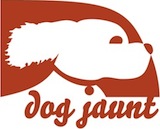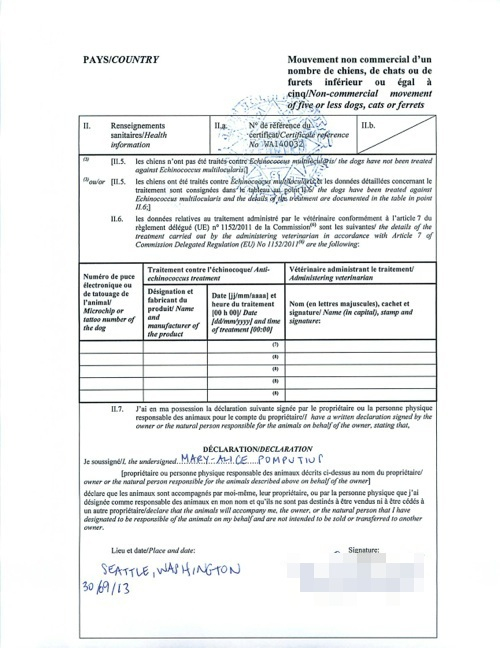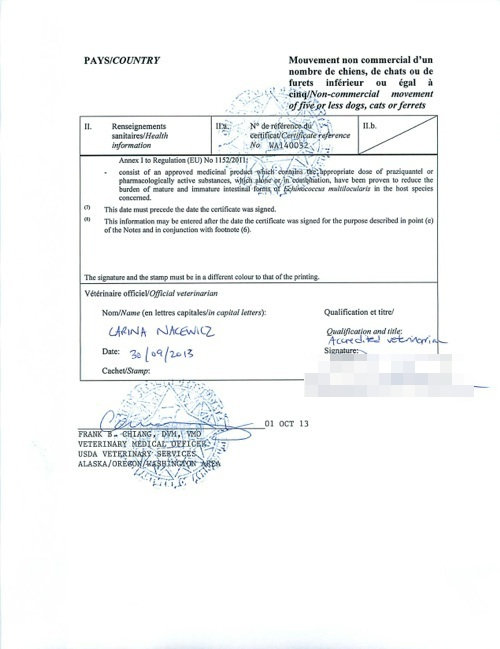What it looks like: Paperwork for importing your dog into France/E.U. from the U.S.
In a previous post, I’ve talked about how to get hold of the current forms needed to import a pet into France (generally speaking, the same form is used throughout the E.U., but look out for local variations, like the tapeworm treatments required by the U.K., Ireland, Finland, and Malta). That info is still good, but reader Bridget asked to see an example of the actual paperwork, properly filled out and USDA-endorsed — such a good idea, and so timely, since today I have in hand Chloe’s paperwork for our trip this week to Paris. Please note that some personal info has been blurred out. [4/6/15 The form for a health certificate for pets traveling from the U.S. to the E.U. changed a few months ago — be sure to download and fill out the current form.]
First is the five-page bilingual form you’ll find when you follow the links I provide in that earlier post:
Attached to the end of it, my vet included a copy of Chloe’s current rabies vaccination certificate, and signed it; and she also included a statement that Chloe’s microchip (she included its number) was implanted on X date, and that Chloe’s rabies vaccine (she included its identifying info) was given subsequent to that implantation on Y date. The info on those two supplements is available in the main form, but the practice is, apparently, to repeat it in these separate documents as well — a belt and suspenders approach.
Other important items I should mention: The forms should be filled out and signed in blue ink. All dates should be in the European format (day/month/year) rather than the U.S. format (month/day/year). Double check your vet’s (and your own!) written dates and also the USDA office’s date stamp to make sure they’re all in the right format. All of the pages of the form should be stamped by the USDA (they will decline to stamp the two supplemental attachments).
Make one or two (or more, depending on where you’re going and how likely it is that someone along the way might want a copy of your pup’s paperwork) color copies of the whole packet. Why color copies? So the blue ink used to fill out and sign the forms, and the blue ink of the USDA’s stamp, is visible. The last time I went to France with Chloe, the USDA office kindly made the copies, and stamped them as well, so they looked (and felt) just about exactly like the original — this time they wouldn’t do that, so there’s no reason to ask them to make the copies anymore.











